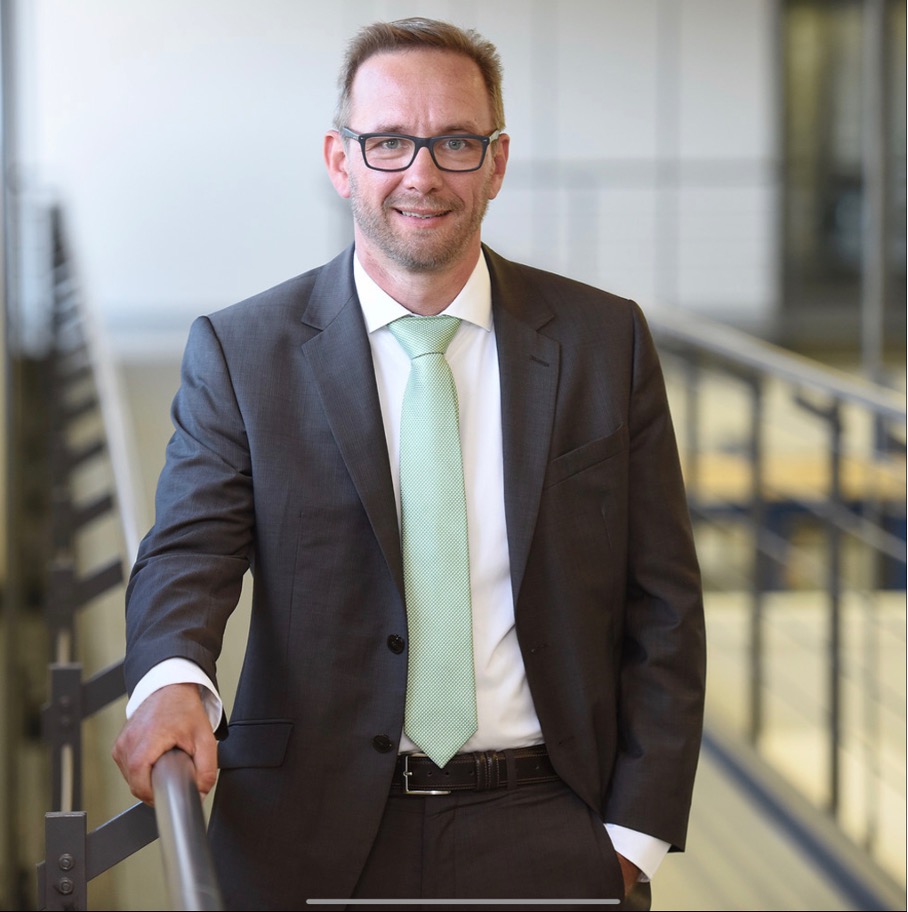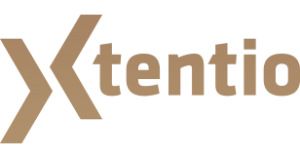In cooperation with Xtentio, the new e-service portal of the Winkhaus Group was implemented on time and within budget. And all this with highly complex requirements, a project duration of three years, the cooperation of five service providers, and approximately 3,000 man-days of work.
In this interview, Dr. Dirk Kettrup explains the specifics and challenges of the project and the role Xtentio played in successfully achieving the goals and staying on budget and on schedule.
This interview is also available as a free PDF version. (Currently only available in German.)
Dr. Kettrup, could you start by telling us how the idea of an e-service portal came about and what you were trying to achieve with this project?
Dr. Dirk Kettrup: Die Herausforderungen waren etwas komplexer, als es die einfache Frage vermuten lässt. Zuerst haben wir unsere bestehenden Kundenservices und Lösungen aus den Blickwinkeln des Vertriebs, des Produktmanagements und des Marketings einmal ganzheitlich betrachtet. Dabei ist uns aufgefallen, dass wir doch einen ziemlichen „Applikationszoo“ mit sehr vielen heterogenen Systemen im Einsatz hatten, das übergeordnete Ziel aber identisch war, nämlich: unseren Kunden erstklassige technische und kaufmännische Services zur Verfügung zu stellen. Das war im Grunde die Geburtsstunde des Projekts. Und wir stellten uns einige Fragen: Was müssen wir konsolidieren? Was ist unsere Ausgangsvoraussetzung und was brauchen wir, um das Ziel zu erreichen? Wie bauen wir die konsistenten Prozessketten für die Dienstleistungen auf?
Our biggest challenge was the complex interrelationships within the Winkhaus Group. Although the goals were the same, the business requirements were quite different in each area.
What was the project environment like? Which service providers were involved and which departments were involved?
D. K.: We did our first, much smaller online project about ten years ago, so it was important for us to work with a service provider who could help us define the goals, the structure of the goals, and the organization and planning of the work packages. This is why we decided to work with Xtentio GmbH from the very beginning. Five external service providers were then involved in the implementation, which had to be coordinated and managed over the entire three-year duration of the project.
Because an e-service portal impacts the entire company, many internal departments were involved. In total, we had over 100 people on the project team because it was important to us to get all the departments involved on board.
What was the Winkhaus Group's project culture like before this project?
D. K.: Grundsätzlich haben wir auch schon vor diesem Projekt ein sehr strukturiertes Projektmanagement in unserem Unternehmen gelebt, allerdings handelte es sich im Vorfeld in der Regel um Entwicklungsprojekte, die immer nach einem sehr ähnlichen Schema aufgebaut waren. In diesem Fall hatten wir es aber mit einem komplexen übergreifenden Strategieprojekt zu tun. Entsprechend war ein agiles Vorgehen geboten. Die agile Vorgehensweise war für ein Vorhaben in dieser Größenordnung eine Herausforderung.
We were able to draw on a lot of experience from previous projects, such as not discussing certain topics in a large group, but rather setting up small project groups and being able to act in a more solution-oriented manner. The downside, of course, is that not all project members are on the same page at all times.
Was the goal of the project developed collaboratively with the team, or were the goals and roadmap set in advance?
D. K.: Das Ziel war schon vor dem Projekt klar definiert. Dieser „Fixstern“ war auch von der Geschäftsführung freigegeben. Und dann ist es auch nicht mehr von zentraler Bedeutung, welche Projektmethoden in welchem Umfang zum Einsatz kommen: Jeder im Team muss auf das gemeinsame Ziel und die gemeinsame Vision eingeschworen werden und verstehen, wofür man das Ganze macht. Ohne dieses klar vorab definierte Ziel gibt es keine korrekte Richtung und jeder Ansatz ist vermeintlich richtig, führt aber nicht zum gewünschten Erfolg.
On the other hand, it was clear that we had a very long and extensive project ahead of us. Of course, you can't plan every step in advance. That's why there have always been small changes along the way to the goal. In this context, it was a big challenge to always clearly communicate the context of the changes to the team. Not everyone understood the variations in the same way, which led to some headwind decisions. Communicating holistically with such a large project team was not always easy.
What were your personal expectations as a member of management and the link between them and the project team? And what should project management do to make you happy with the results?
D. K.: D. K.: I actually felt personally responsible as the driver of the project, and at the same time I was aware that I also had to delegate responsibility to the specialist departments. The requirements for the project were ultimately defined by the departments. On the other hand, as a project sponsor, you have a fundamental obligation.
It was important to me that we had a clear picture of the goals to be achieved, the planned budget and the timeline, and that we could continuously measure the work progress, budget consumption and goal achievement. Here, Xtentio was a very good and reliable partner at my side, because I could always be sure that regular, fully comprehensive and transparent project controlling would take place. This meant we always knew where we stood. This approach was very important because we knew from the beginning that this was a long-term and complex project that needed to be properly developed and established within the company.
I have always kept an eye on our "magic triangle" of performance, time and cost. A project is only successful if it is balanced overall. So I was constantly checking how the three dimensions related to each other. Project progress was communicated regularly and transparently, and any necessary changes to the plan were incorporated into the communication as best as possible.
How did you proceed with the project?
D. K.: D. K.: In the beginning, we only talked about onboarding and team composition. We then implemented a fixed schedule structure for the project itself. There were monthly meetings for the sub-project managers and biweekly sprint meetings for IT and the external consultants. In between we had short votes for the intermediate results. During this time, the developers and IT liaisons were in regular contact with the business people. And testing was always done to have the most complete work packages ready for sprint acceptance.
Overall, the departments and the implementation team worked very well together without ever losing sight of the goal. It was certainly positive that we had both new and experienced colleagues on the team. However, most of the participants had some prior project experience.

"Through its structured approach and methodology, Xtentio has shown that agile transformation projects can excel at staying on track."
Dr. Dirk Kettrup, Head of IT and Member of the Executive Board of Aug. Winkhaus GmbH & Co KG
About the person
Dr. Dirk Kettrup was head of IT and a member of the management team at Aug.
Winkhaus GmbH & Co. KG, a leading provider of intelligent system solutions
for windows, doors and access organization.
In this role, Dr. Kettrup is also responsible for the implementation and rollout of the new e-service portal based on SAP Commerce Cloud.
Over the past five years, Xtentio has been closely involved in this comprehensive transformation project - supporting strategy and system decisions, technical design, implementation of the overall solution, and agile program management.
What do you think of this approach, was it effective?
D. K.: D. K.: It went well - the service providers and project managers were able to contribute a lot with their expertise. The cooperation with the developers was also consistently positive, and the solutions could always be tested well before the end of the sprint. The work packages were also very well defined overall. However, it was important to use the meetings to discuss strategic issues and brainstorm solutions. We definitely had an idea of where we wanted to go. To test this idea, we often built prototypes, tried them out, verified them, found them good or discarded them, and went into an iterative process about them to realize our ideas in a way that could perfectly fulfill the original purpose.
You mentioned prototypes: the basic assumption is yes, that a prototype is shown to better evaluate the solution. What benefits have you seen?
D. K.: D. K.: For me personally, prototyping is very valuable. Many colleagues find it difficult to imagine the final solution, and the prototypes help immensely. I found the regular presentations and reviews of prototypes to be a key recipe for success in the project.
Your project then ran into the pandemic in 2020. What were the main differences between the period before and during Covid-19? And most importantly, what went well and where were new challenges?
D. K.: D. K.: The project was seamlessly continued remotely. We were fortunate that we were not two to three months into the project, the teams were already productive, and the project process was well established. All we had to do was extend the technology, and we were able to use the new way of working as an opportunity. We had a real boost in collaboration: less time wasted in travel and traffic situations, more quality time. As before the pandemic, the project atmosphere was harmonious, trusting and understanding. I believe that our unconditional openness contributed to a very good cooperation and an optimal workflow in the project. And there were still valuable discussions within the team that led to an optimal solution.
Was there anything that fell by the wayside, especially with the Corona pandemic?
D. K.: D. K.: Of course there was that: the social interaction, the after-work beer, the joint review of the project, or simply private topics to get to know the team members better.
Were there any difficulties with team composition in the project?
D. K.: D. K.: Some of the project drivers were new to the company, and they brought many innovative ideas that were not always well received. Not all deliverables were considered necessary by all departments, but they were important to the overall success of the project.
When you look back on your approach to project management, especially the effort, external consultants, and time spent, did it deliver the benefits you were looking for?
D. K.: D. K.: At this point, it has not yet paid for itself. But we didn't invest in products, we invested in data and processes. And that will benefit our bottom line in the years to come. I am confident that the feedback from customers will be very positive in the years to come. We would do it again anytime, which is another sign of a successful project. We have improved our data quality tremendously and now have a significant advantage over our competitors. Winkhaus has really done something great here.
Are you already in the middle of your next big IT project? What lessons can you take away for the next projects in the Winkhaus Group?
D. K.: D. K.: Yes, of course - we still have some plans. For the next big project, we will try to make the business even more accountable, so that control is not just in the hands of project management and IT. In the form of various business cases, we want to better formulate the project goals together with the specialist departments, so that the benefits of certain solutions are not only recognized at the end of a project phase. When business teams see this benefit sooner, they are more motivated, more likely to take ownership, and more likely to make the project "their" project.
Dr. Kettrup, thank you very much for the interview.

FAST - Scalable agile project management for transformation projects
Where agile development methods reach their limits, FAST - the Framework for Agile Scaled Teams - combines scalability with ease of implementation, clarity and predictability.
